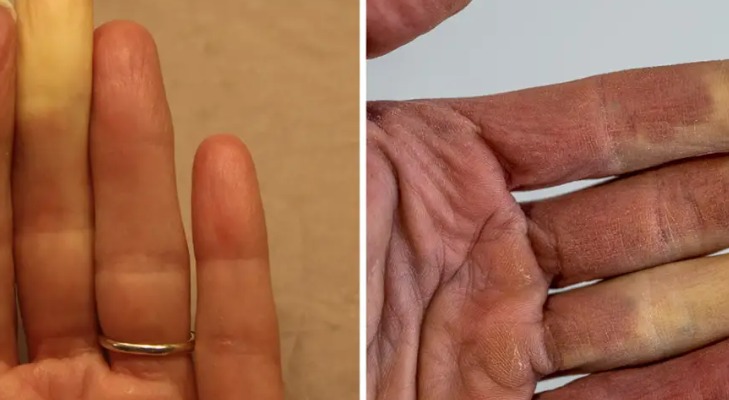As the temperatures drop, it’s essential to take precautions to keep our bodies warm, especially our extremities. But have you ever wondered why some people’s fingers turn white in the cold? The answer might surprise you.
This phenomenon is often linked to a condition called Raynaud’s phenomenon or Raynaud’s syndrome. It’s characterized by the constriction of blood capillaries, which reduces blood flow to the skin. As a result, the affected area turns white, and as blood returns, it may turn blue or red.
People with Raynaud’s syndrome often experience a painful and numbing sensation in their fingers or toes, which can be quite uncomfortable. Interestingly, this condition affects women more than men.

Symptoms can last anywhere from a few minutes to several hours, and in some cases, they may disappear for a while before returning. It’s not just fingers and toes that can be affected; other areas like the nose, ears, lips, and nipples can also turn white.
So, what triggers Raynaud’s syndrome? While cold temperatures are a common culprit, stress, anxiety, and even prolonged use of vibrating tools can also bring on the condition.
To prevent or alleviate symptoms, there are a few simple steps you can take. Wearing gloves can help keep your hands warm, while avoiding stressful situations can also reduce the likelihood of an episode. Quitting smoking is another effective way to alleviate symptoms.
In rare cases, Raynaud’s syndrome can lead to more severe consequences, such as ulceration, scarring, or even tissue death. However, these extreme cases are extremely uncommon.
By understanding what causes fingers to turn white in the cold, we can take steps to prevent and manage the condition. So, the next time you notice someone’s fingers turning white, you’ll know the possible reason behind it.


